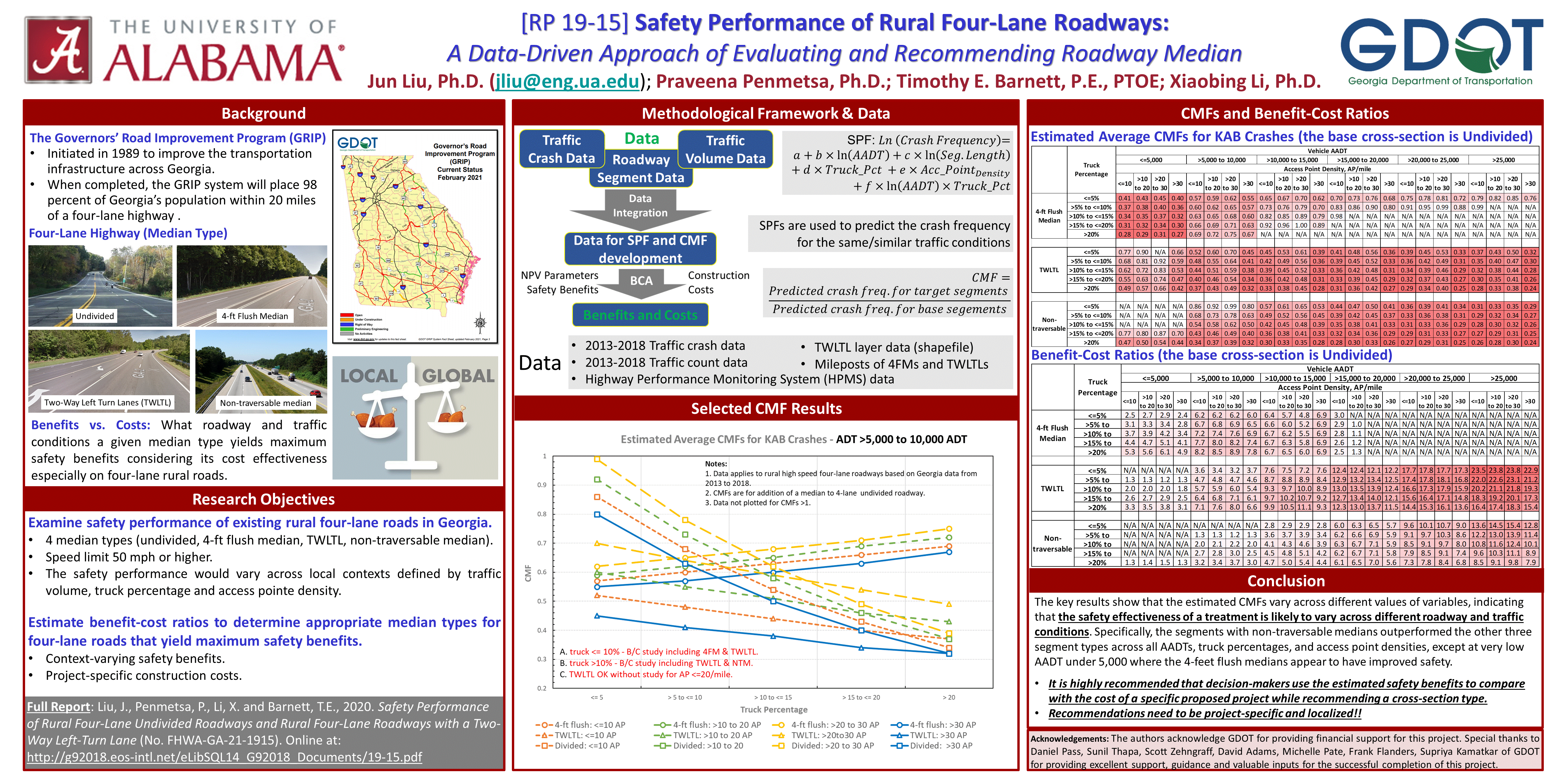PI: Jun Liu
Co-PI(s): Praveena Penmetsa, Ph.D. Timothy E. Barnett, P.E., PTOE Xiaobing Li, Ph.D.
Institution(s): University of Alabama
Abstract
Non-traversable medians consistently yielded improved safety performance compared to other median types such as undivided, 4-feet flush medians, and two-way left-turn lane cross-sections. However, constructing non-traversable medians can be costly. The goal of this study is to 1) examine the safety performance of existing rural four-lane roadways with above-mentioned four median types in Georgia by using Safety Performance Functions (SPFs) and Crash Modification Factors (CMFs), and 2) develop criteria to determine under what conditions these four median types yield maximum safety benefits while considering construction costs. Data were refined and integrated from multiple sources such as from the Georgia Department of Transportation (GDOT), Federal Highway Administration (FHWA) and Google Maps. The Annual Average Daily Traffic (AADT), truck percentage, and access point density were considered as key independent variables in SPFs. The CMFs were estimated to show the effectiveness of a cross-section compared to the base- four-lane undivided roadway. Note, the SPFs and CMFs developed in this study did not consider the speed limit. The key results show that the estimated CMFs vary across different values of variables, indicating that the safety effectiveness of a treatment is likely to vary across different roadway and traffic conditions. Specifically, the segments with non-traversable medians outperformed the other three segment types across all AADTs, truck percentages, and access point densities, except at very low AADT under 5,000 where the 4-feet flush medians appear to have improved safety. The research team estimated average annual crash reductions (compared with undivided roadways), which were converted into monetary values using the average crash costs by severities. The safety benefits and project construction costs were used to estimate benefit-cost ratios (BCRs). Simulations were suggested in situations where safety solely did not help in the decision-making process of identifying cost-effective median type for rural four-lane roadways. It is highly recommended that decision-makers or practitioners use the estimated safety benefits from this study and the construction costs of a specific highway project to estimate BCRs for recommendations of the cross-section type.

Please comment below with any statements or questions you may have. Also let GTI if you would be interested webinars or presentations on similar topics.
